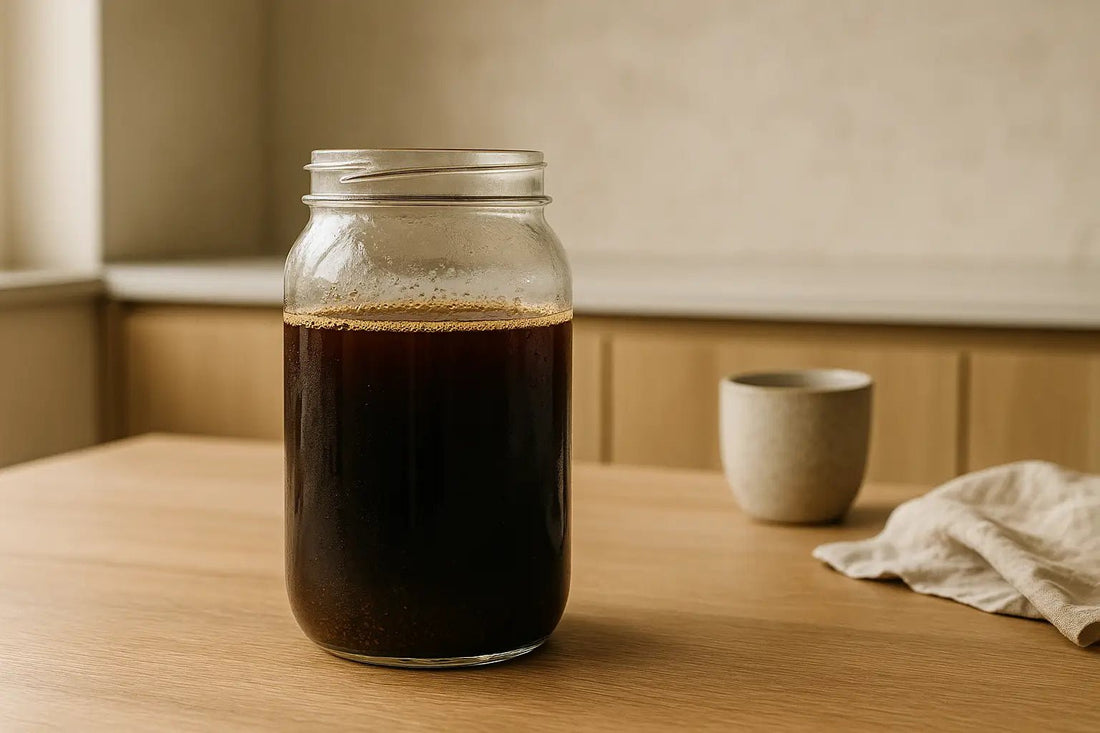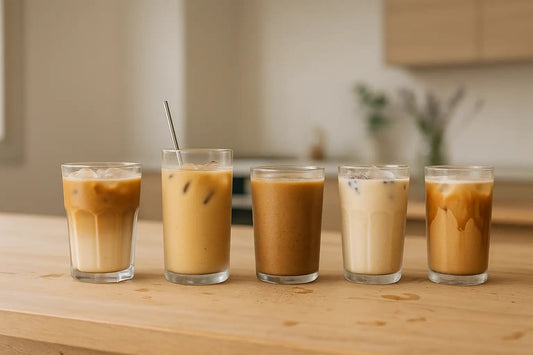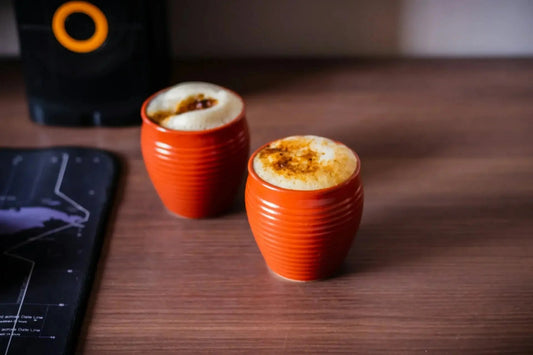
Cold Brew Coffee at Home | Easy Method Without Fancy Gear
James RocheCold Brew Coffee at Home: Easy Method, No Fancy Kit Needed
Cold brew sounds fancy, but it’s dead easy. No expensive gear. No barista training. Just a bit of patience and the right beans. Here’s how to make smooth, chocolatey cold brew at home without the faff.
What Is Cold Brew, Really?
Cold brew is made by steeping coarse coffee grounds in cold water for 12-18 hours. That’s it. No boiling. No espresso machine. Just time.
The result? A naturally sweeter, lower-acid brew that’s smooth, rich, and ridiculously easy to drink - especially in summer.

Everything you need for cold brew at home
What You Need (It’s Less Than You Think)
- Coarsely ground coffee (think chunky like sea salt)
- Cold or room temperature filtered water
- A big jar, jug or French press
- A strainer, sieve or cloth
- Time (12–18 hours, depending on taste)
That’s it. If you’ve got a cafetière and a jug, you’re sorted.
The Cold Brew Method (Step by Step)
- Grind your coffee coarse - pre-ground won’t cut it
- Mix 1:8 ratio - that’s 100g coffee to 800 ml cold water
- Stir and cover - leave it on the counter or in the fridge
- Steep for 12–18 hours - longer = stronger
- Strain it twice - to avoid any gritty bits
- Serve over ice - or dilute with water or milk
☕ Brewing Tip
Cold brew concentrates can be strong. Start with a 50/50 mix of cold brew and water or milk, then tweak to taste.

Cold brew poured fresh over ice — smooth, simple, satisfying
What Coffee Works Best?
This method shines with low-acid, chocolatey coffees. African naturals, Latin American blends and medium roasts all do well. Skip the citrusy stuff - it can taste sour and cold.
Our go-to? The Burundi Red Bourbon - apple juice, orange zest, marshmallow. Ideal for cold brew.
If you want the full breakdown, check our full guide: Best Coffee for Cold Brew: What to Use & Why.
How Long Does It Last?
Up to a week in the fridge, but it’s best fresh within 3–4 days. Store in a sealed jug or bottle. Shake gently before each pour.
FAQs
Can I use a cafetière to make cold brew?
Yes - it’s actually ideal. Just brew it the same way, then plunge and strain.
Do I need a special cold brew maker?
Not at all. A jug or French press will do the job perfectly.
Is cold brew stronger than regular coffee?
It can be. Cold brew is often brewed as a concentrate, so you’ll need to dilute it.
Can I use espresso roast?
You can, but medium roasts tend to give a smoother cold brew. Espresso roasts can be a bit bitter when brewed cold.
Ready to brew it right?
Start with the right beans. Our Burundi Red Bourbon is a perfect match. Fruity, rich, and smooth as anything.
Got questions? Drop them in the comments below. We’re always up for a coffee chat.


